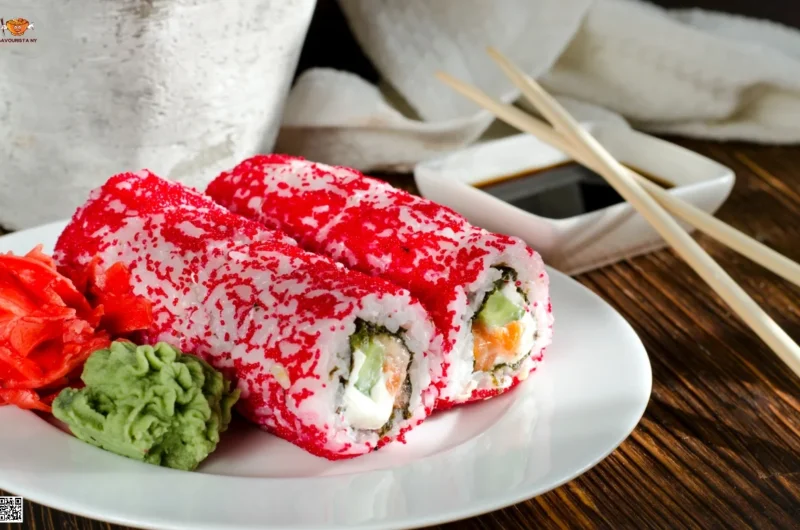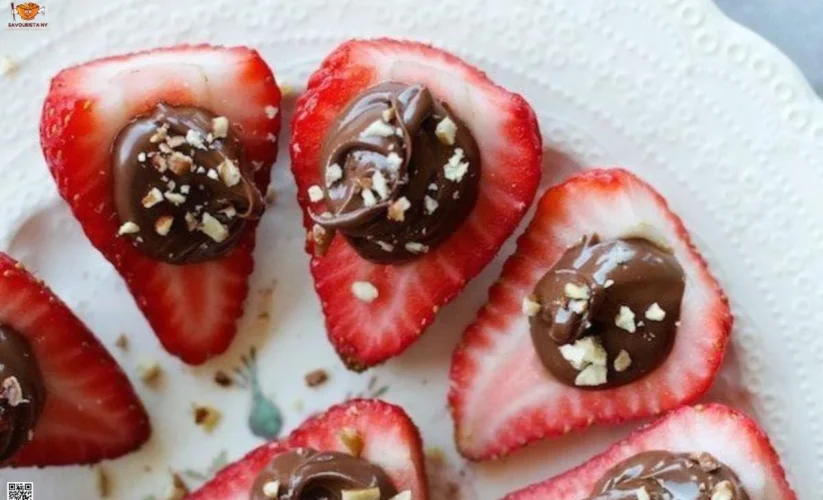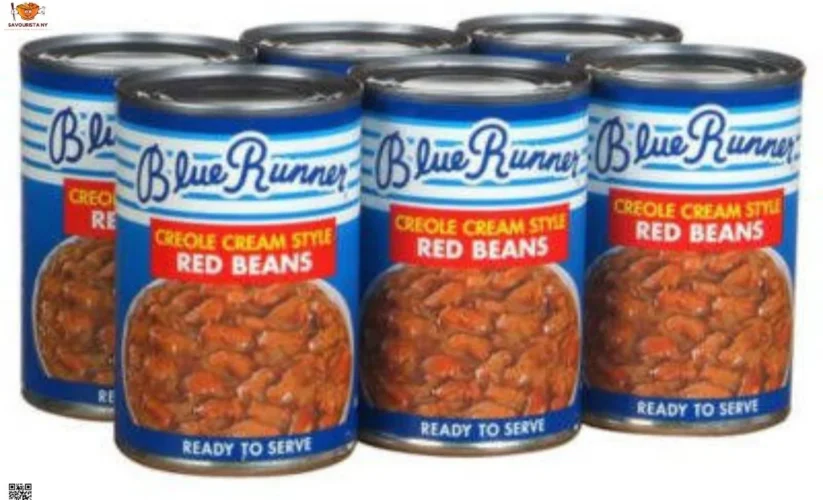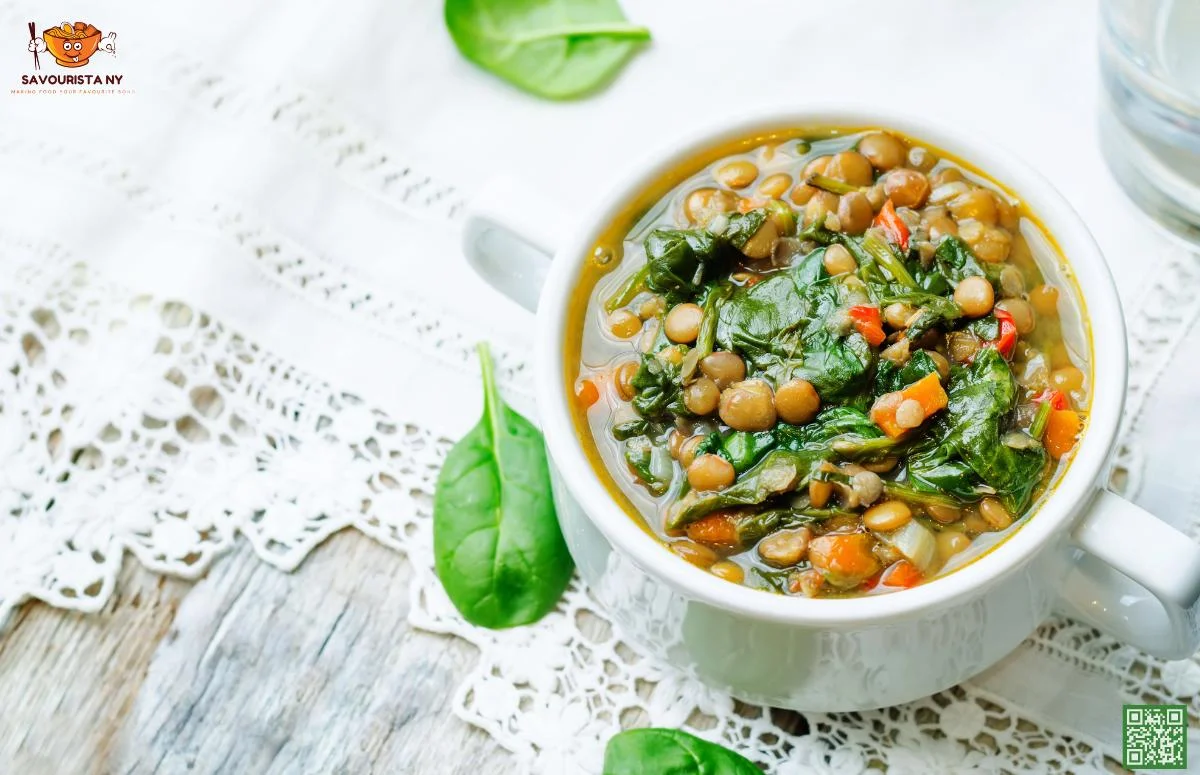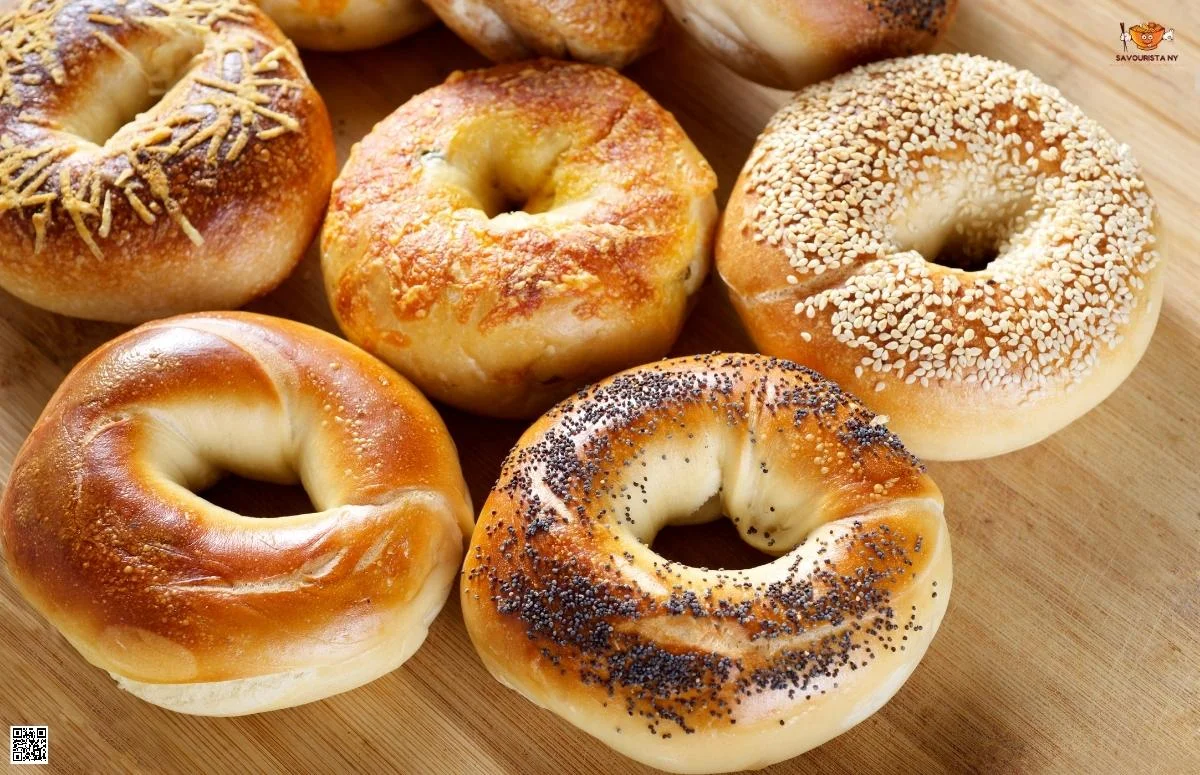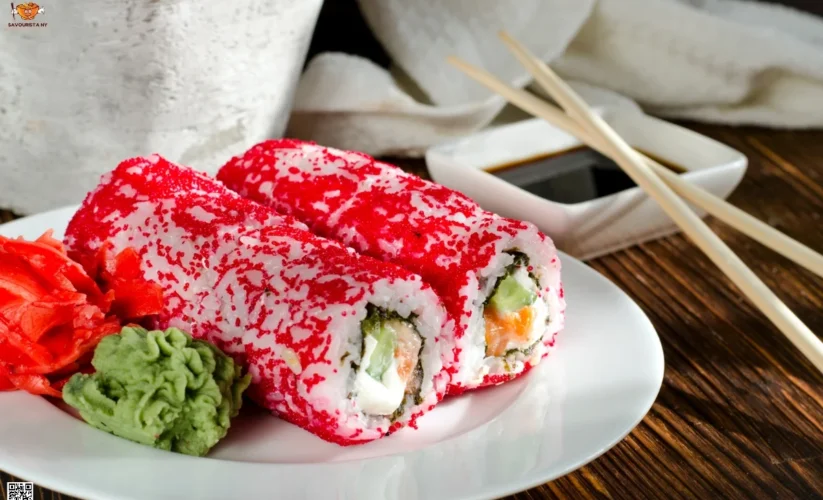
Make Japanese-Special Masago Sushi Under 1 Hour
Are you a sushi enthusiast or simply love exploring delicious seafood? Here’s your cue to have Masago Sushi that you have seen filled up within sushi rolls. It can be found in different colors like yellow, red, green orange and all look aesthetically appealing. This most hyped sushi is an absolute delicacy prepared with smelt roe and came out as raw edible Capelin fish eggs.
Although, you no longer need to stick to those boring shrimp recipes, be a little adventurous, let go of the limitations, and make this out-of-the-box recipe that is softer than tobiko and its citrusy, briny yet sweet flavor that beats all other ingredients.
Its versatility isn’t something you can just overlook, just dye it with any color and make it visually appealing that will make you devour it in one bite.
Whenever you have gone to a restaurant and ordered a salmon dish or even Prosciutto rolls and felt that signature unidentified crunch, then it’s your masago undoubtedly.
Let’s hang out with me to explore what is masago sushi, its impeccable flavor, how it can be used differently, its health merits, and drawbacks, how to store it efficiently, and its preparation.
What Is Masago Sushi?
While delving into unique Japanese cuisine, we often come across Masago Sushi. But what is it and what’s making it the talk of the town? It’s an edible fish egg sourced from small capelin fish and is often called ‘capelin roe’.
Although it’s pale in color, to give it an aesthetic and visually appealing look, it’s dyed with red, green, or sometimes bright orange color.
Masago Sushi isn’t the only way masago can be utilized, there are various other ways, it tastes perfect, has a crunch in its bite, and looks perfect, and then again it’s packed with a range of health benefits.
These eggs are best source of protein, selenium, omega-3 fatty acids, and many other essential nutrients. Isn’t it just amazing?’
When masago is generally harvested? The female capelin starts releasing eggs when are aged 2-4 years but harvesting is halted until the fish is full of ripened eggs but not gotten a chance to spawn.
The 80% harvested capelin eare ggs used either for making fishmeal or in fish oil products. While the rest of the 20% is used for making this delicious masago sushi.
Is Masago & Tobiko Same?
Are they the same? Not at all, there are differences but one thing which might confuse us that both are the same thing as these are fish roe and are filled in sushi rolls. Masago is capelin roe with a smaller size and dull color while comparatively tobiko is larger, with extra flavor and bright color with more crunch.
One thing that makes us hesitant to buy tobiko is its price, it’s way too costly and in the bustling world where the inflation rate has skyrocketed, choosing a cost-effective product seems a wise choice.
But again both look similar and have somewhat similar flavors so we will go for masago sushi instead of tobiko.
How Masago Sushi Taste Like?
How does it taste like and why has it got a separate fan base? Its taste isn’t overpowering nor too mild to be negligible but a perfect blend of sweet, bitter, citrus, and fishy flavor. Therefore, it can go along perfectly with versatile ingredients like squid ink, ginger, soy sauce, or even wasabi.
You can have a blast of flavor when it’s rolled inside sushi, masago even tastes well with rice and vegetables and becomes full of flavor with a crunchy texture and aesthetic appearance. These masago sushi taste bomb, that’s all I can say.
How Masago Sushi Can Be Used In Different Recipes?
There are several ways masago can be utilized, masago sushi isn’t the only option, you can pair up this fantastic ingredient with anything.
It might be small in size but the pop of flavor can boost up any dish.
Use As A Filing
Do you want to have the pop of that signature masago flavor? Why not stuff it in sushi tolls? The masago sushi is one of the bolder moves once you have ditched the traditional filling.
Get your creative pants on and use it as a filling which gives a nice contrast with the crunch of eggs and the softer texture of rice.
Use As Topping/Garnishing
Another idea is to use it as a topping in masago sushi rolls. Will the pale color look aesthetical? No right, so we will dye them with either orange or red color as they won’t only look perfect but an extra coating of color adds a nice crunch and subtle flavors we can all die for.
Use For Decorative Purpose
The crowd-pleasing dishes are always the best looking, aren’t they? To make your masago sushi stand out, you no longer need to be a top chef.
This capelin roe looks pretty shiny and serves as volcano sushi rolls as the red-colored masago gives a real lava trickling down effect.
So if you have this urge to make this crowd-favorite recipe, serve it this way and glutton over all the praise.
Merits of Consuming Masago Sushi
Seafood contains a plethora of health benefits that can’t be replaced, masago sushi is no different.
Premium Quality Protein
As protein is a building block of amino acids, and masago contains all essential amino acids making it a complete source of protein.
It might be small in size but a power punch of the finest proteins, even a single ounce gives 6g of protein equivalent to ingesting a whole large egg.
Protein comparatively fats and carbs keep you satiated for a long time and reduce your incessant hunger cravings.
Rich Source of Minerals & Vitamins
Masago naturally contains selenium that protects your body from oxidative stress and strengthens immune and thyroid glands due to its antioxidant properties.
Moreover, it contains vitamin B12 another great dose of feeling mental disabilities, and improves nerve health.
Only Seafood With Low Mercury
Seafood is usually high in mercury and most of the selenium is kept on fish organs and muscle tissue.
While fish eggs comparatively contain less mercury masago is a great choice than large fish like mackerel and swordfish.
Rich In Omega-3 Fatty Acids
Omega-3 fatty acids are abundantly found in masago sushi, these healthy fats manage blood clotting, inflammation rate, and risk of cardiovascular diseases.
Drawbacks of Having Masago Sushi
Masago sushi isn’t always healthy, it has some downsides as well which you must be aware of.
- Are you salt-sensitive? Then the excessive amount of sodium might not be a good choice as masago itself is loaded with salt and then the accompanying ingredients like soy sauce and salt further enhance sodium content worsening blood pressure.
- Masago contains vitellogenin, a fish egg protein that is the most common allergen and is known to cause allergic reactions characterized by rashes, difficulty in breathing, and hypotension.
- It’s usually accompanied by either monosodium glutamate (MSG) or fructose corn syrup. Both have harmful impacts on long-term use. The firmer one causes headaches and flushed skin while the latter slows down metabolism and causes insulin resistance.
- Additionally, the methods used for capelin fishing have a risk of catching endangered and overfished species, so aren’t ecologically recommended.
How To Effectively Store Masago Sushi?
Seafood is never shelf-stable, so how to tackle its perishability? You can store masago sushi effectively by either refrigeration or freezing.
- Always store masago in an airtight container in the refrigerator and it will stay fresh for 2-3 days once you have opened the package.
- What if you have some leftovers? Place it in the freezer and it will be fine for 3 months.
FAQs on Masago Sushi
What does masago taste like?
It has a mild flavor and can easily be paired with any ingredient, its taste can be described as fishy, salty, citrus, and a little bit of sweetness.
Masago Sushi
Course: AppetizersCuisine: JapaneseDifficulty: Easy10
servings15
minutes22
minutes46
kcalIngredients
1 cup sushi rice
1 cup water
2 tablespoons sushi vinegar
1 cup water
1/2 teaspoon salt
1/2 teaspoon sugar
1 avocado (sliced)
2 seaweed nori leaves
1 tablespoon masago
4 oz. of imitation crabs
Directions
- Thoroughly rinse the rice, add water, and let your rice cook.
- Once the rice is well-cooked, put it into a large bowl and then add sugar, sushi vinegar, and salt.
- Put a plastic wrap over the bamboo mat so that the rice doesn’t stick to the mat.
- Cut these nori slices and divide them into halves.
- Put one-half of the nori leaf on the bamboo mat and then spread the cooked rice over it evenly.
- Spread it in the way your nori faces upward and rice faces downward.
- Now put avocado and pseudo crab slices over it, and put your hands beneath the bamboo mat so that rice doesn’t stick to the surface.
- Keep rolling to secure it and continue doing it until you reach the end.
- Place it on the cutting board and make 10 equal pieces.
Notes
- Spread masago evenly over each sushi, for even distribution, use your hands.
Nutrition Facts
- Amount Per ServingCalories46
- % Daily Value *
- Total Fat
1g
2%
- Saturated Fat 0.9g 5%
- Cholesterol 3.9mg 2%
- Sodium 39mg 2%
- Potassium 48mg 2%
- Total Carbohydrate
7g
3%
- Dietary Fiber 11g 44%
- Sugars 1g
- Protein 11g 22%
* The % Daily Value tells you how much a nutrient in a serving of food contributes to a daily diet. 2,000 calories a day is used for general nutrition advice.
For more recipes & blogs, please visit savouristany.com

